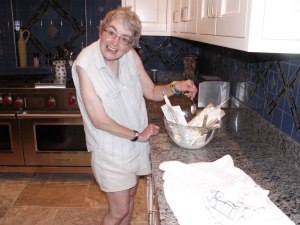 In the fall of 2010, about six weeks after my first trip to Lebanon and Syria, Steve arranged for two of us to take a vacation, a rare event in our life together to that point. It was a full ten days in Rome, Italy. It still seems like a dream! We rented this sweet little apartment off the Piazza Navona, up three flights of well worn marble steps in a building that was young by Roman standards, maybe sixteenth century. There was no television, no internet connection and the only phone was wired in. We were disconnected from email, the daily news and everything else, except each other. Bliss.
In the fall of 2010, about six weeks after my first trip to Lebanon and Syria, Steve arranged for two of us to take a vacation, a rare event in our life together to that point. It was a full ten days in Rome, Italy. It still seems like a dream! We rented this sweet little apartment off the Piazza Navona, up three flights of well worn marble steps in a building that was young by Roman standards, maybe sixteenth century. There was no television, no internet connection and the only phone was wired in. We were disconnected from email, the daily news and everything else, except each other. Bliss.
Every day we would eat a late breakfast, decide which way our steps would take us that day and then set out with our packs and a map. We walked for miles and miles every day, sometimes jumping on the bus, and once even taking the train to Asti and Hadrian’s Villa. But mostly we walked. We had lunch every day in a different place, but always the same lunch: pizza margherita and wine. It was like a game deciding where we would have it, but we always did. When we walked home in the evening we would always stop at a market and pick up something to make for dinner. Then we would eat, drink some more wine, watch a Rome-themed movie (we had brought some from home with a portable dvd player) and then head out for a late snack of gelato. Like I said, it was bliss.
Most days we turned to the right when we left the apartment, toward the Piazza Navona. But one day near the end, we went left toward Vatican City. We had tickets for the museum, which was endless corridors of amazing paintings and sculpture and wood carvings and glass. On and on it went and so did we in a sea of tourists. We spent our allotted twenty minutes or so in the Sistine Chapel, again overwhelmed by the sheer beauty of someone’s amazing creativity. No sound was uttered by anyone. It was just hundreds of pairs of eyes looking up, looking around, widening more and more with each view.
Leaving there we made our way to St. Peter’s Square and then into the basilica itself, where we marveled at Michelangelo’s Pietà, the white marble statue of the virgin mother Mary holding the lifeless body of Jesus. It is hard not be to be moved at this expression of love lost and love given: a mother’s greatest loss and the world’s greatest gift, or so those who profess faith in Jesus – like me – believe.
We continued walking around this beautiful church and admiring all the artwork, which is everywhere, and then heard the announcement that Mass was going to start and you should only go past the barricade if you were participating. We weren’t, so we didn’t, but we did stay. And as we walked silently behind the worshipers the strains of the music of Mass arose and did what they always do to me. They reached to the very core of my being, back to my earliest memories of what it meant to be in church, to be a part of the body of Christ, and raised me upward with “Hallelujah, ha-a-le-lu-jah, hallelujah.” And I wept with joy to be in the mother church of my faith, my mother’s and grandmother’s and so many greats past that who called the Roman Catholic Church their own. It was the community of saints singing for the one I call Lord. And it was bliss once again.
I have been to so many churches around the world and I always get this same feeling, the feeling of being home again. And I know one day I really will be home, singing the hallelujahs with so many I have known and so many others too. And that will surely be bliss.













